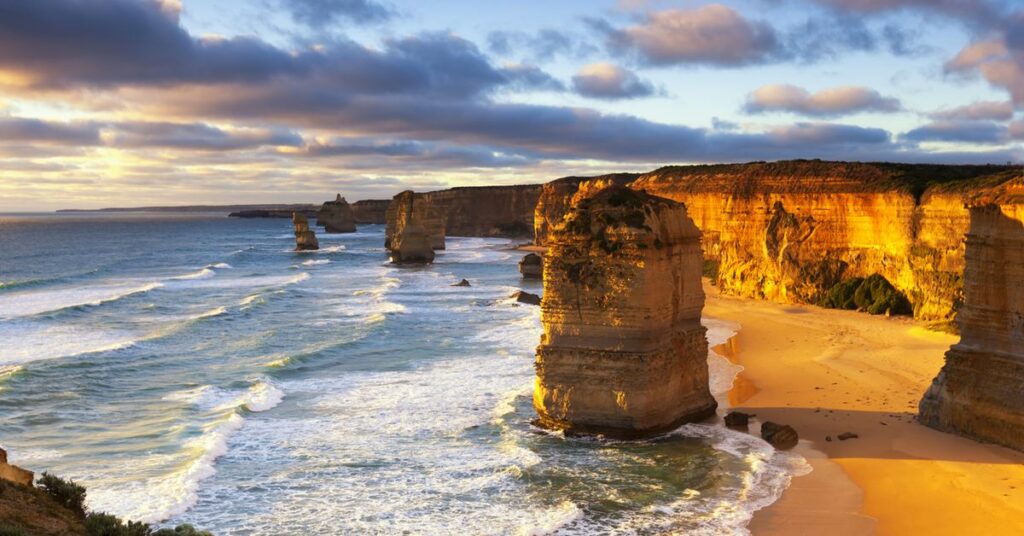
A proposal to charge tourists a fee to visit the iconic Twelve Apostles on Victoria’s Great Ocean Road has been introduced by the Great Ocean Road Regional Tourism (GORRT) and the Corangamite Shire Council. The initiative, announced today, calls on the Victorian state government to approve a user-pays model aimed at enhancing infrastructure, conservation efforts, community wellbeing, and the overall visitor experience.
The proposed fee is part of a broader strategic business plan for 2025-2029 and is seen as a “once-in-a-generation” opportunity to manage tourism sustainably. According to GORRT chair Andrew Jeffers, “As stewards of the visitor economy in this extraordinary region, we believe a thoughtfully introduced user-pays system is not only fair, it is essential.” He emphasized that the approach should facilitate active management of visitor numbers, promote overnight stays, and ensure economic benefits are reinvested into protecting the fragile coastal environment.
Background and Strategic Vision
The Twelve Apostles, a collection of limestone stacks off the shore of the Port Campbell National Park, attract approximately two million visitors annually. The broader Great Ocean Road sees an influx of around 6.8 million tourists each year. The region’s popularity has led to significant wear and tear on its natural resources, prompting local authorities to seek sustainable tourism solutions.
GORRT’s general manager Liz Price highlighted the need for alignment between tourism management and regional values, stating, “The Great Ocean Road is more than a scenic drive – it’s a living, working region filled with vibrant communities, remarkable landscapes, and cultural depth. It’s time we aligned our tourism management with our values – sustainability, responsibility, and long-term community benefit.”
Funding and Implementation
While the specifics of the tiered fee system have not been finalized, the proposal outlines that funds raised would contribute to a $126 million investment into the Twelve Apostles Precinct, including the development of a new visitor center. The plan suggests that a “well-designed” model would incentivize overnight and off-peak travel, thus alleviating pressure during peak periods.
The joint statement from GORRT and Corangamite Shire urges the Victorian government to “lead boldly” in unlocking the full potential of the Great Ocean Road region. This call to action reflects a broader trend in global tourism where destinations are increasingly adopting user-pays models to balance economic benefits with environmental stewardship.
Global Trends and Expert Opinions
The move to introduce a fee aligns with international trends where popular tourist destinations implement similar measures to manage visitor impact and fund conservation efforts. For instance, cities like Venice and countries like Bhutan have successfully introduced tourist fees to preserve their cultural and natural heritage.
According to tourism expert Dr. Emily Carter, “Implementing a user-pays system can be an effective way to ensure that tourism contributes positively to both the economy and the environment. However, the success of such initiatives depends on careful planning and community involvement.”
“An estimated 6.8 million tourists traverse the Great Ocean Road each year, with two million visiting the Twelve Apostles annually.”
Future Implications and Next Steps
The introduction of a tourist fee at the Twelve Apostles could serve as a model for other regions grappling with similar challenges. By prioritizing sustainability and community benefits, the proposal aims to create a more balanced approach to tourism that ensures long-term viability.
As discussions continue, the Victorian government will need to weigh the potential economic benefits against the possible deterrent effect on visitor numbers. Stakeholder consultations and public feedback will likely play a crucial role in shaping the final implementation of the fee system.
In conclusion, the proposed fee represents a significant step towards sustainable tourism management in one of Australia’s most visited natural attractions. As the plan moves forward, it will be essential to maintain an open dialogue with all stakeholders to ensure the initiative meets its intended goals.







